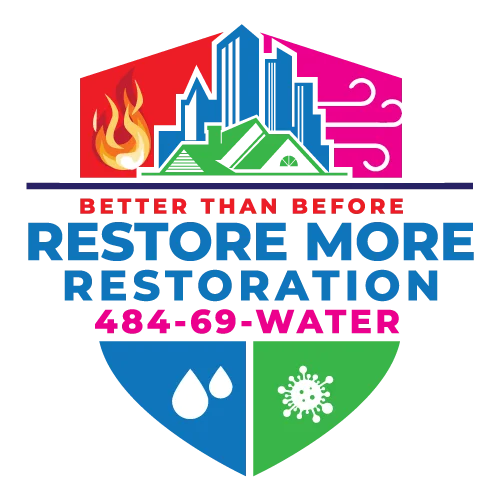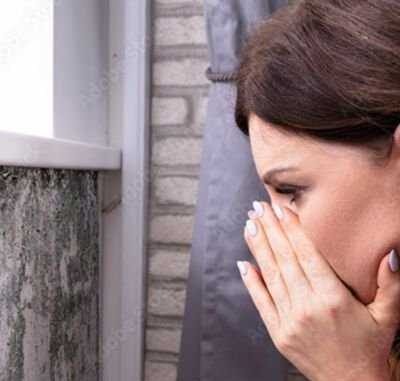Why Professional Help is Essential
Living in Ardmore’s historic Main Line community presents unique challenges regarding mold remediation. The area’s older homes and Pennsylvania’s humid climate create perfect conditions for mold growth.
Call Now 484-882-0971As a woman-owned restoration company serving the Ardmore area, we understand the complexities of dealing with mold in these cherished properties.
Why Ardmore Homes Are Susceptible to Mold
Historical Architecture
- Older plumbing systems
- Traditional building materials
- Less effective ventilation
- Aging basement foundations
- Historical preservation restrictions
Climate Factors
- High humidity levels
- Seasonal temperature changes
- Heavy rainfall periods
- Basement moisture issues
- Poor drainage in older properties
The Hidden Dangers of Mold
Health Risks
- Respiratory issues
- Allergic reactions
- Asthma triggers
- Eye and skin irritation
- Chronic health conditions
Property Damage
- Structural deterioration
- Material degradation
- Decreased property value
- Aesthetic damage
- Long-term maintenance issues
Professional Mold Remediation Process
1. Comprehensive Assessment
- Visual inspection
- Moisture mapping
- Air quality testing
- Hidden mold detection
- Source identification
2. Containment Measures
- HEPA air filtration
- Negative air pressure
- Physical barriers
- Cross-contamination prevention
- Protected work zones
3. Professional Removal
- Safe mold elimination
- Proper disposal methods
- Affected material removal
- Structural cleaning
- Surface treatment
4. Prevention Strategies
- Moisture control
- Ventilation improvements
- Waterproofing solutions
- Humidity management
- Prevention education
Why Choose Professional Services in Ardmore
Local Expertise
As your neighbors in the community, we understand:
- Local building codes
- Historic district requirements
- Common area mold issues
- Regional climate challenges
- Property preservation needs
Advanced Equipment
We utilize state-of-the-art technology:
- Industrial-grade dehumidifiers
- HEPA air scrubbers
- Moisture meters
- Thermal imaging cameras
- Professional-grade antimicrobials
Comprehensive Protection
Our service includes:
- Full insurance coverage
- Licensed technicians
- Safety protocols
- Documentation
- Warranty protection
The Maternal Approach to Mold Remediation
As a woman-owned business, we bring a unique perspective:
- Attention to detail
- Family health focus
- Clear communication
- Empathetic service
- Long-term solutions
Common Mold Problems in Ardmore Homes
Basement Issues
- Foundation seepage
- Poor ventilation
- Pipe condensation
- Flooding aftermath
- Chronic dampness
Attic Concerns
- Roof leaks
- Poor insulation
- Inadequate ventilation
- Ice dam damage
- Humidity buildup
The Cost of Ignoring Mold
Financial Impact
- Increased repair costs
- Property value decrease
- Insurance complications
- Energy inefficiency
- Renovation delays
Possible Health Consequences
- Worsening symptoms
- Medical expenses
- Lost workdays
- Chronic conditions
- Family health risks
Our Professional Guarantee
When you choose us, you receive:
- Thorough assessment
- Detailed action plan
- Regular updates
- Complete documentation
- Follow-up support
Prevention Tips for Homeowners
Daily Practices
- Control humidity levels
- Improve ventilation
- Address leaks promptly
- Monitor problem areas
- Regular maintenance
Long-term Solutions
- Waterproofing
- Drainage improvements
- Ventilation upgrades
- Regular inspections
- Professional maintenance
Contact Us for Expert Help
Don’t let mold compromise your Ardmore home and family’s health. As your local mold remediation experts, we’re here to help with:
- 24/7 emergency response
- Free consultations
- Detailed assessments
- Professional solutions
- Ongoing support
Our Promise
As a woman-owned business, we treat every client like family. We understand the stress and concern that comes with mold issues, and we’re here to provide technical expertise and the support and guidance you need during this process. Don’t let mold damage continue to affect your home and health. Contact us today, and let our family help protect yours with professional mold remediation services tailored to Ardmore’s unique needs.

Mold damage restoration removes and remediates mold growth in a home or building.
Mold can be a serious health hazard and can cause structural damage to a building if left untreated.
The benefits of mold damage restoration include:
1. Improved indoor air quality
Mold can release spores into the air, which can cause respiratory problems and other health issues. Removing mold can improve indoor air quality.
2. Structural integrity
If left untreated, mold can cause structural damage to a building. Mold damage restoration can prevent further damage and restore the structural integrity of the building
3. Prevention of future mold growth
Mold damage restoration not only removes existing mold but it also prevents future mold growth by addressing the underlying cause of the mold growth, such as moisture or humidity issue.
When performing mold damage restoration, there are several things to be careful of:
- Safety: Safety should be the top priority when dealing with mold. Protective equipment, such as gloves, masks, and goggles, should be worn at all times.
- Proper equipment: Specialized equipment, such as air scrubbers, HEPA vacuums, and dehumidifiers, should remove mold and prevent future growth.
- Thorough cleaning: Mold can grow in hidden or hard-to-reach areas, so it is important to thoroughly clean all affected areas, including walls, floors, and ceilings.
- Proper disposal: According to local regulations, mold-infected materials, such as drywall or insulation, should be properly disposed of.
- Verification: After restoration of mold damage, verification should be performed to ensure that all mold has been removed and the area is safe for occupancy.
- Trained professionals: Mold damage restoration should be performed by trained professionals who have experience in dealing with mold and know how to remove and remediate it properly. DIY mold removal can be dangerous and can make the problem worse if not done correctly.
If you have questions or need immediate help, please call us at 484-882-0971 (24/7) or use the contact us form here
Call us at 484-882-0971 for immediate assistance.
Remember, in Ardmore’s unique environment, professional mold remediation isn’t just about cleaning – it’s about protecting your family’s health and your home’s future.





